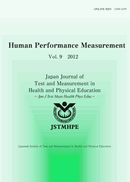Purpose: The aim of the present study was to elucidate the reliability and validity of measurement of ground reaction force (GRF) parameters during a sit-to-stand (STS) movement as a method of assessing lower limb muscle function in middle-aged and older women with knee pain. Methods: We recruited 61 women with mild to moderate knee pain and 61 healthy controls, aged 50-86 years. Five GRF parameters were measured: peak reaction force, two rate of force development parameters, and two time-related parameters. These parameters were compared on the basis of the presence or absence of knee pain. Intraclass correlation coefficients (ICC) and errors of measurement values were calculated. Partial correlation analysis adjusted for age was used to investigate the association between GRF parameters and knee extension strength, muscle power, and five physical function tests. Results: Significant differences were observed between groups in the following GRF parameters: peak reaction force and the two parameters of force development rate (Cohen’s d = 0.68-1.44). In participants with knee pain, the abovementioned three parameters had a good reproducibility (ICC = 0.88-0.93). The two parameters of force development rate were significantly correlated with knee extension torque and power (partial-r = 0.50-0.57) and five physical function tests (partial-|r| = 0.40-0.59) adjusted for age. Conclusion: These results suggested that GRF parameters in the STS movement have sufficient reliability and validity as a method of assessment of lower limb muscle function in middle-aged and older women with mild to moderate knee pain.
抄録全体を表示
